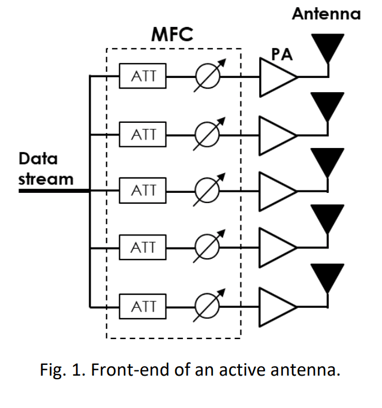WHITEPAPER
Multi-Function Chip (MFC) behavioral modeling for accurate beamforming simulations
(1).png?width=3000&height=4619&name=Page%20couverture%20White%20paper%20(300%20%C3%97%20462%20mm)(1).png)
Introduction
The evolution of wireless communications technologies has given rise to new architectures in the radio chain, from precoding to the active antenna, where different techniques have been developed to improve the capacity and coverage of the network.
Beamforming in Advanced Antenna Systems (AAS) including phased-array antennas or massive MIMO is designed depending on the number of final users and the characteristics of the deployment scenarios. Thus, radio transceivers must be tested in real conditions and different configurations to be efficiently implemented.
Circuit-level simulation of the radio chain is not straightforward when considering wideband complex modulated signals. Thus, system simulation becomes the better approach to analyze and test the antenna front-end, where the elements of the radio chain will be analyzed using behavioral models.
Between the main elements of the beamforming architecture there are the step attenuators and the phase shifters (Fig. 1), used to direct the antenna beam. DSA+DPS can be modeled as a Multi-Function Chip (MFC) where they will be characterized by a 2-port S parameters controlled by the attenuation and phase values to switch between states.
Extracting accurate behavioral models of this system can be cumbersome because of the high amount of measurement data and time necessary to get the information to model all possible states.
In this white paper, a new approach to model DSA and DSP systems will be presented using the MFC model extraction available in the VISION software considerably reducing the measurements time to extract an accurate model.

“This paper, present a new approach to extract MFC models. From this new approach, four different models are studied, drastically reducing the measurements time to characterize a DSA+DPS system”
